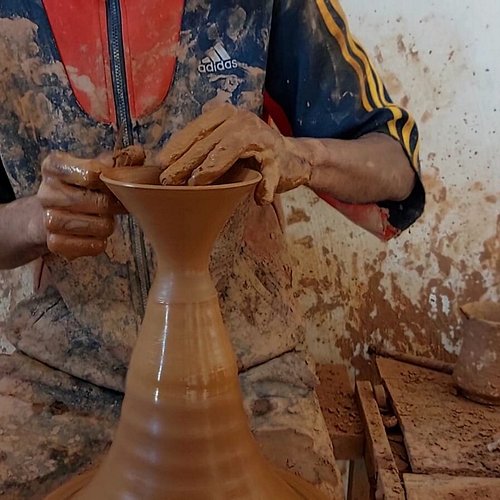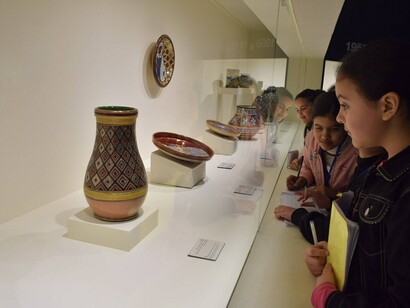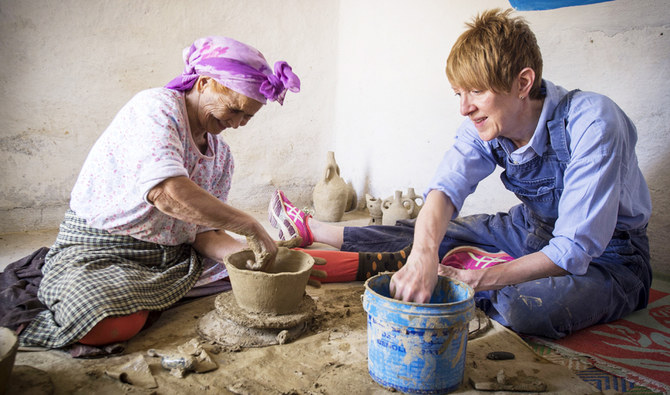Safi pottery is more than just a craft—it is a legacy, a passion, and a way of life. Behind every intricately designed plate, vase, or tile lies a world of dedication, tradition, and skill passed down through generations. But what does it really take to create these stunning pieces? Beyond the vibrant marketplaces and art galleries showcasing Safi pottery, there is a hidden world of artisans, long hours of labor, and the constant balance between tradition and innovation.
In this article, we take you behind the scenes to explore the untold stories of Safi’s potters—their daily routines, the challenges they face, and the triumphs that keep this centuries-old craft alive.
A Day in the Life of a Safi Potter
For Safi artisans, pottery is not just a profession—it’s a rhythm of life. Their day starts early, often at sunrise, as they immerse themselves in their craft.
1. Preparing the Clay
Before a single shape is molded, the clay itself must be perfected. This is a labor-intensive process that involves:
Soaking raw clay in water to soften it and remove impurities.
Kneading and pounding it thoroughly to achieve the right consistency.
Filtering the clay through fine sieves to ensure a smooth texture.
This meticulous preparation is crucial—any imperfection in the clay can lead to cracks or breakage in the final product.
2. Shaping and Carving
Once the clay is ready, artisans begin shaping their creations. Some use traditional potter’s wheels, skillfully molding the wet clay into elegant forms, while others craft larger pieces by hand. This stage requires a deep understanding of balance and symmetry, as even a minor mistake can affect the structure.
Intricate carvings and patterns are often etched into the surface while the clay is still damp, adding character and meaning to each piece.
Filtering the clay through fine sieves to ensure a smooth texture.
This meticulous preparation is crucial—any imperfection in the clay can lead to cracks or breakage in the final product.

3. Drying and Firing
Before being fired in the kiln, the shaped pottery must dry completely. This drying process can take days, depending on the weather. The firing itself is a critical moment—kiln temperatures must be carefully controlled, as too much heat can cause cracks, while too little may leave the piece fragile.

The Challenges of the Craft
While Safi pottery is admired worldwide, few people realize the hardships that artisans endure to bring their creations to life..
1. Weather-Dependent Drying
Safi’s climate plays a significant role in pottery production. If the air is too humid or rain arrives unexpectedly, drying times extend, delaying the entire process. In colder months, artisans may struggle to meet demand due to slower drying times.
2. The Risk of Kiln Failures
One of the greatest fears of any potter is an unsuccessful firing. Kilns must maintain precise temperatures, and even a slight miscalculation can cause an entire batch to crack or lose its color vibrancy. The loss of hours—sometimes weeks—of work is a devastating reality that artisans face.
3. Scarcity of Raw Materials
High-quality clay, natural pigments, and wood for firing are not always easy to source. As environmental changes impact clay deposits and demand grows, finding premium materials has become more challenging. Some artisans are forced to adjust their techniques to work with different clay compositions
Moments of Triumph
Despite these challenges, there are moments of joy and pride that make the journey worthwhile.
1. The Joy of a Perfect Batch
When a kiln firing is successful, and the pottery emerges without cracks, with vibrant colors and detailed patterns intact, artisans celebrate their hard work paying off.
2. Custom Orders with Emotional Value
Many artisans receive commissions for special occasions—wedding gifts, commemorative plates, or family heirlooms. Creating pieces that hold sentimental value brings immense pride, as these works will be cherished for generations.
3. Global Recognition
While Safi pottery has long been a cultural emblem of Morocco, it is now gaining international recognition. Artisans take pride in knowing their work is being displayed in galleries across Europe, North America, and beyond. Some even receive visitors who travel to Safi specifically to meet the creators behind these masterpieces.


Traditions Passed Down Through Generations
One of the most fascinating aspects of Safi pottery is the way it is preserved through family traditions.
1. Apprenticeship and Mentorship
Young artisans often start as apprentices, watching their elders shape clay, mix colors, and apply intricate designs. Learning by doing, they absorb techniques that have been honed over centuries.
2. Oral Storytelling and Symbolism
Many of the patterns seen on Safi pottery carry cultural or symbolic meanings. These designs are often passed down through oral storytelling, connecting the craft to Morocco’s rich history.
3. Adapting to Change While Honoring Tradition
Though traditional techniques remain central, new generations are finding ways to blend old and new. Some artisans experiment with contemporary designs while staying true to their heritage, ensuring that Safi pottery evolves without losing its authenticity.
The Future of Safi Pottery
While Safi’s pottery industry is deeply rooted in tradition, modern influences are beginning to shape its future.
1. Technological Advancements
Some workshops are introducing electric pottery wheels, more efficient kilns, and digital design tools to streamline production while maintaining quality. These innovations help artisans meet growing demand while reducing the risk of errors.
2. International Collaborations
The increasing global appreciation for handmade goods has led to partnerships between Safi artisans and international designers. These collaborations bring fresh perspectives to the craft, making it more accessible to a worldwide audience.

3. Sustainable Practices
With the growing awareness of environmental concerns, many artisans are shifting toward sustainable practices—using locally sourced natural pigments, reducing waste, and exploring eco-friendly firing techniques.
The magic of Safi pottery goes far beyond its beauty. Each piece is a testament to resilience, creativity, and the enduring spirit of Moroccan artisans. Their work is not just about shaping clay—it is about preserving a cultural heritage that has withstood the test of time.
By supporting Safi pottery, whether by purchasing handmade pieces or sharing their stories, we contribute to the survival of an art form that continues to inspire, connect, and evolve.
So, the next time you hold a Safi ceramic bowl or admire a hand-painted tile, remember the unseen hands that shaped it, the centuries of tradition behind it, and the passion that keeps this extraordinary craft alive.




